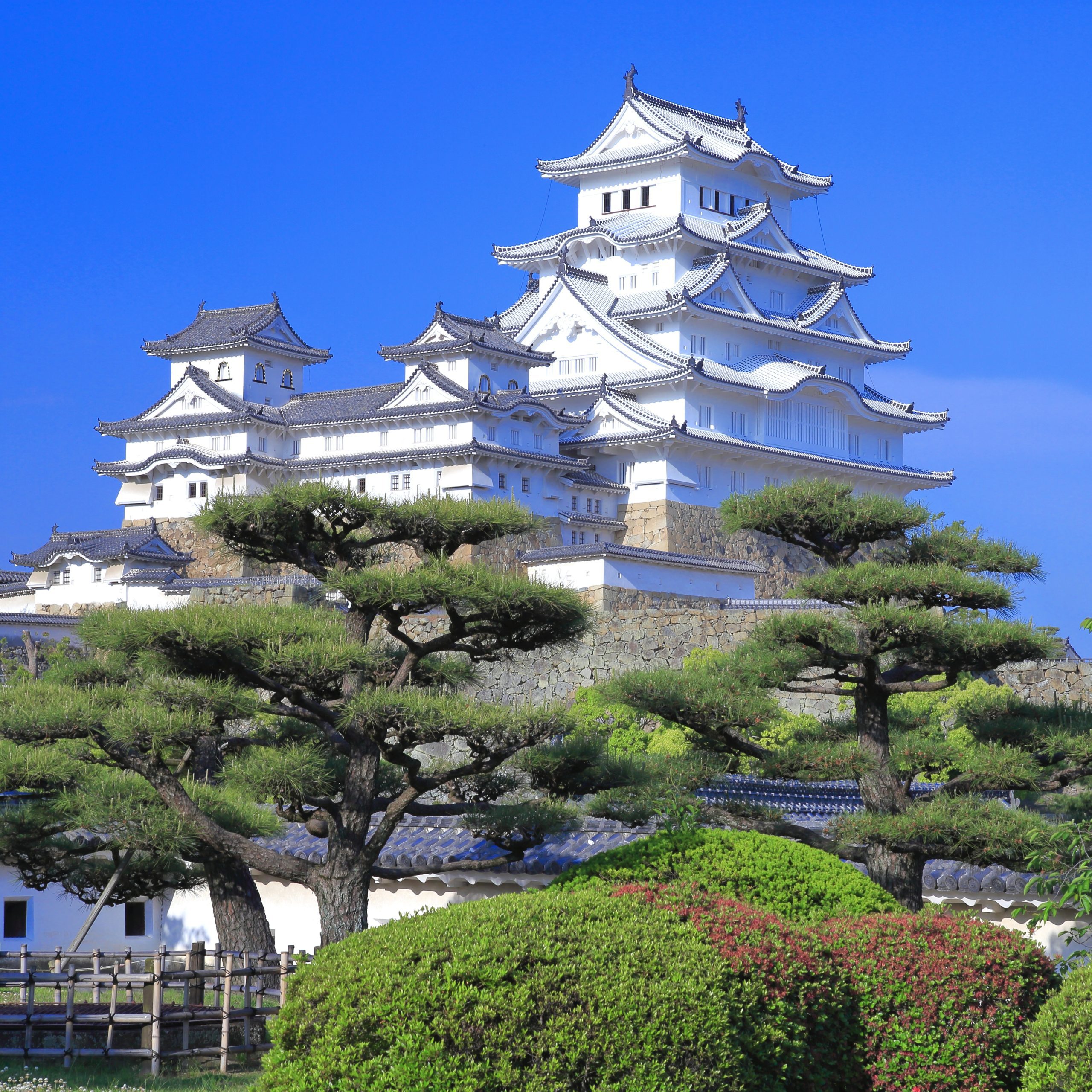Japan has a lot more going for it than just sushi, cherry blossoms, and all things “kawaii.”. It’s also packed with some seriously impressive castles. Think towering keeps, moats, secret passageways, and centuries of samurai history. Exploring these castles is an awesome way to get an inside look at how samurai and feudal lords once lived, ruled, and defended their turf.
And summer? Surprisingly it’s a great time to do it. Sure, it’s hot, but the long daylight hours and lively seasonal festivals make every trip worth the sweat. So if you’re on the lookout for stunning spots to explore, you’re in the right place. Here are 10 of the best castles across Japan, plus some cool nearby attractions and summer festivals to make your trip even more memorable.
Himeji Castle (Hyogo)
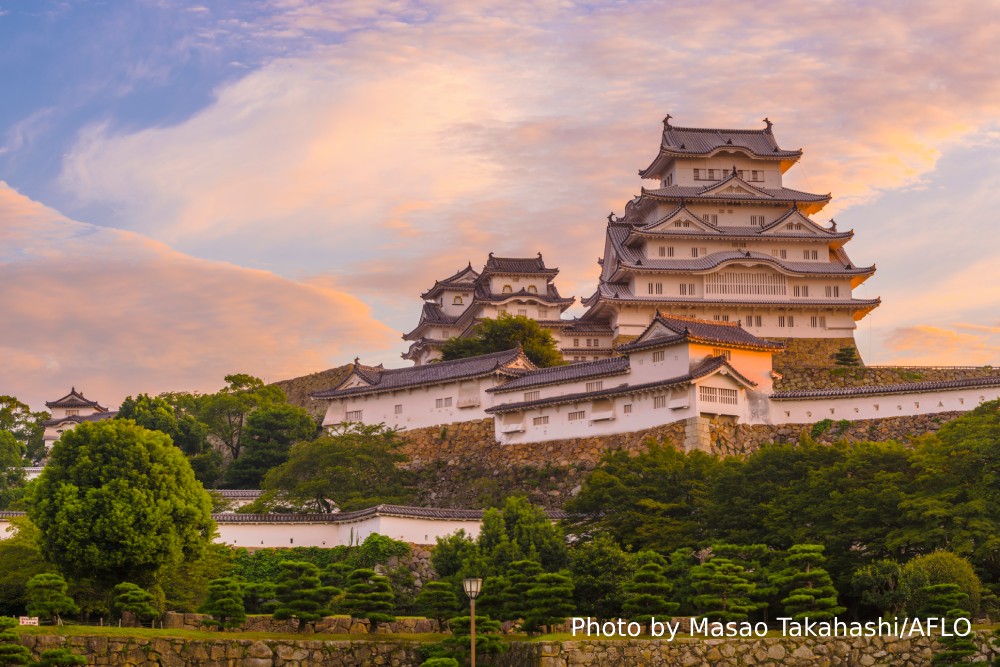
Himeji Castle, Hyogo Prefecture (Photo by Masao Takahashi/AFLO)
This castle is nicknamed the “White Heron Castle” for its elegant, bird-like silhouette. Many consider it Japan’s most spectacular and best-preserved feudal fortress. Many consider it Japan’s most spectacular and best-preserved feudal fortress. Recognized as both a UNESCO World Heritage Site and a National Treasure, this architectural masterpiece originated in 1333, with its current form completed in 1609. Having withstood wars and earthquakes, it remains a powerful symbol of Japan’s enduring craftsmanship and historical legacy.
Visitors can walk through a maze-like network of gates, stone walls, and defensive passageways originally built to confuse and slow down invaders. Climbing to the top of the six-story main keep will reward you with panoramic views of Himeji city and the nearby mountains.
The castle grounds are expansive and breezy. However, the summer heat can be intense so bring a hat, water, and sunscreen. Plan to arrive early to beat both the heat and the crowds. After your castle tour, there’s plenty more to explore nearby.
What to Do Nearby
Koko-en Garden
Just steps from the castle’s western moat, Koko-en Garden is a beautifully landscaped haven that includes nine separate traditional gardens, each designed in a different Edo-period style. Opened in 1992 to commemorate the 100th anniversary of Himeji’s municipal founding, it features koi-filled ponds, bamboo groves, waterfalls, and a traditional tea house where visitors can enjoy seasonal tea ceremonies.
Mount Shosha & Engyo-ji Temple
If you’re up for a scenic side trip, take a 30-minute bus ride and a short ropeway up Mount Shosha, home to the Engyo-ji Temple complex. Founded in 966 AD, this historic temple is part of the Tendai Buddhist sect and is still an active site of worship and training.
The peaceful setting and panoramic views make it a great spot for quiet reflection. Movie buffs might recognize it as a key filming location for The Last Samurai (2003), where its architecture helped to portray 19th-century Japan.
Engyo-ji also offers experiences like zazen (seated meditation) sessions and sutra copying (the practice of hand-copying Buddhist scriptures, giving visitors a hands-on way to connect with Japanese spiritual traditions.
Other Attractions in the Area
Himeji City Zoo – A small, family-friendly zoo located within the castle park. While modest in size, it’s a fun stop if you’re traveling with kids and looking for a bit of animal-watching after exploring.
Himeji Central Park – A hybrid safari park and amusement park located about 30 minutes from the city center. Opened in March 1984, it is the only safari park in the Kansai region and maintains a sister park partnership with Nairobi National Park in Kenya.
You can wrap things up with dinner in nearby Kobe, just 30 minutes away by train—for bay views and some of the best beef in the world.
Himeji Yukata Festival
If you’re in Himeji in late June, don’t miss the Himeji Yukata Festival, one of the city’s biggest summer events. The festival has been running for over 250 years, and it features colorful parades, food stalls, traditional music, and performances.
Thousands of locals and visitors attend dressed in yukata (light summer kimonos). These not only add to the festive atmosphere but also come with perks: free entry to Himeji Castle and discounts on city transit. If you don’t own a yukata, you can easily rent one for the day from local shops.
Matsumoto Castle (Nagano)
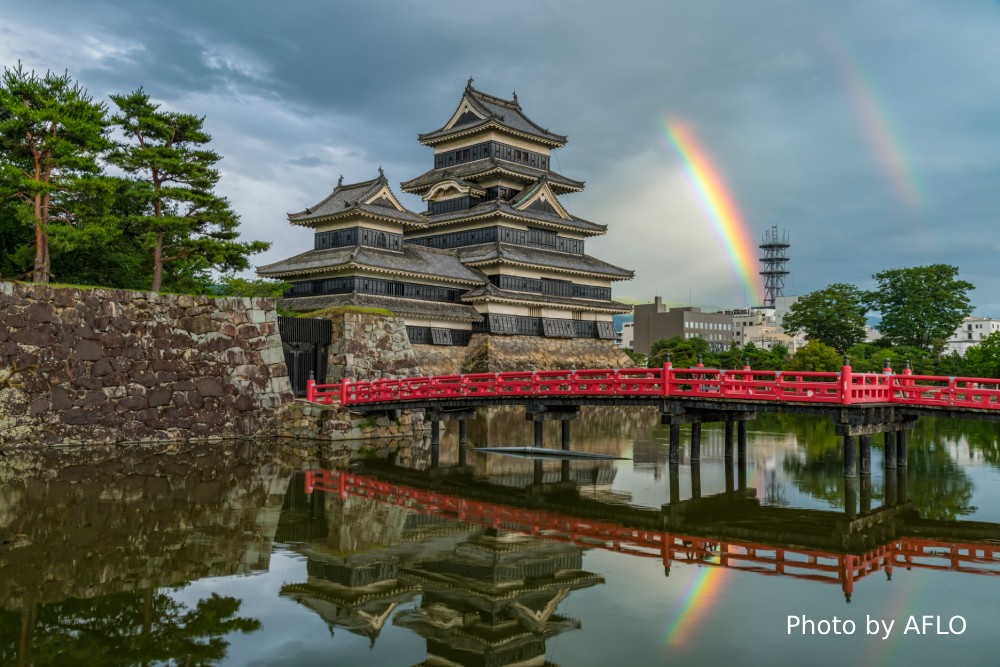
Matsumoto Castle and Rainbow Nagano Pref. (Photo by AFLO)
Matsumoto Castle (originally known as Fukashi Castle) stands out as one of Japan’s most visually dramatic castles. Built in the late 16th century during the Sengoku (Warring States) period, the castle served as a military fortress rather than a luxury residence. Nicknamed the “Crow Castle” (Karasu-jō) for its dark, wing-like roofs, it’s one of the country’s few remaining original castles from the feudal era. It is very fascinating and photogenic.
Unlike many castles built on hills or mountains, Matsumoto is a flatland castle, strategically protected by a wide moat and stone fortifications. Summer brings clear skies and cool mountain breezes that make strolling the castle grounds surprisingly pleasant, even in the warmer months. That’s why it ranks among the best castles to visit in summer.
During peak times like the Obon holidays in mid-August, wait times to enter the castle tower can reach up to two hours. To manage the crowds, numbered entry tickets are sometimes distributed, allowing you to return at a designated time for faster entry.
What to Do Nearby
Matsumoto City Museum of Art
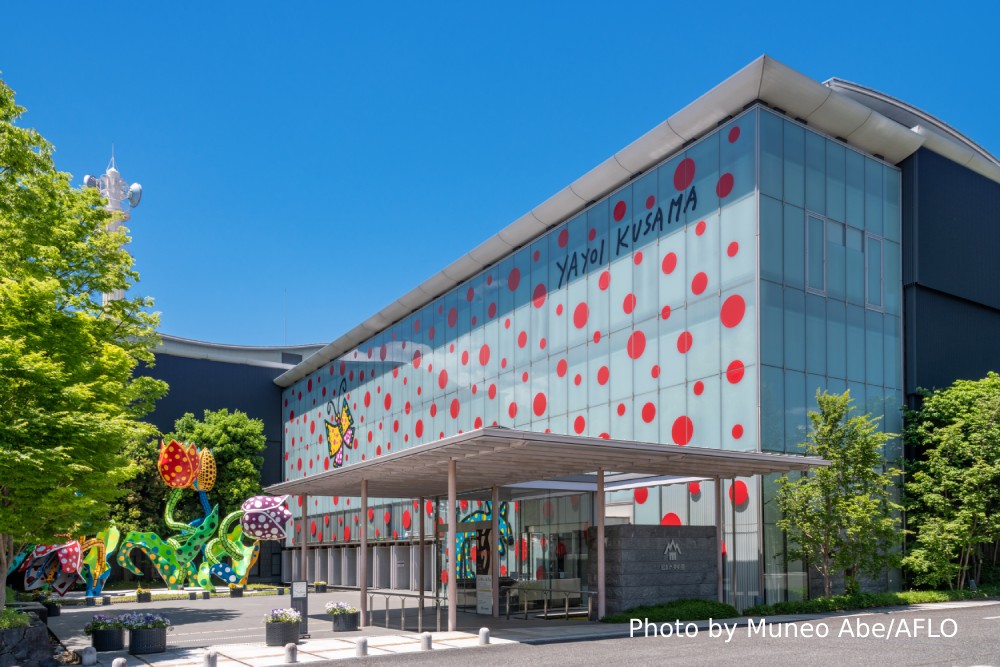
Matsumoto City Museum of Art, Nagano, Japan (Photo by Muneo Abe/AFLO)
You definitely shouldn’t miss the Matsumoto City Museum of Art if you’re an art lover. It’s just a short walk from the castle! It is home to an extensive collection of works by Yayoi Kusama, the internationally renowned artist known for her polka dots and immersive installations, who also happens to be a Matsumoto native.
Outside, you’ll spot a giant, polka-dotted sculpture of a pumpkin, a signature Kusama piece that doubles as a popular photo spot.
Nawate Street
Just across the river from the castle, Nawate Street is a shopping alley lined with traditional wooden storefronts. It’s filled with shops selling everything from local snacks and handmade crafts to antiques and quirky frog-themed souvenirs.
Why frogs? The word for frog in Japanese is kaeru, which also means “to return.” This play on words makes frogs symbols of safe journeys, a fitting charm for travelers.
Utsukushigahara Highlands
If you’re craving some mountain air, take a short drive or bus ride to the Utsukushigahara Highlands, located on a plateau about 2,000 meters above sea level. The area is known for breathtaking alpine scenery, walking trails and wildflowers in bloom during summer. There’s also the Utsukushigahara Open-Air Museum, an outdoor sculpture park featuring more than 350 contemporary pieces.
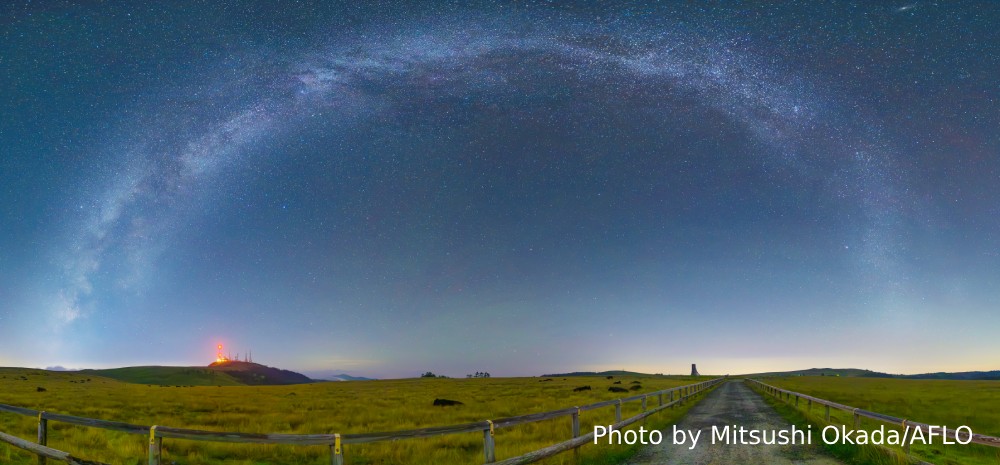
Panorama of Utsukushigahara’s pasture road, the Milky Way and the Beauty Pagoda Nagano Pref. (Photo by Mitsushi Okada/AFLO)
Summer Festivals in Matsumoto
Takigi Noh
Noh, one of Japan’s traditional dramatic arts, is renowned for its iconic masks and elaborate costumes. Typically performed in a Noh theatre with a specially designed stage, the art form offers a unique cultural experience. However, every August in Matsumoto, the city hosts a special outdoor Noh performance within the castle’s inner garden. The performance begins in the early evening and continues under the glow of lanterns as night falls.
Matsumoto Bon-Bon
In early August, don’t miss the Matsumoto Bon-Bon, a massive, city-wide dance event. Locals form large groups and dance through the streets in colorful outfits, all to a catchy Bon-Bon theme song. Street food vendors, lanterns, and performances make this one of the most joyful and community-driven festivals in the region.
Matsumoto is in Nagano Prefecture, Japan’s soba (buckwheat noodle) capital. Don’t leave without trying handmade soba, served cold with dipping sauce (Zaru soba) or hot in broth (Kake soba). Many shops use locally grown buckwheat and water sourced from the surrounding mountains, giving the noodles a fresh, nutty flavor unique to the region.
Osaka Castle (Osaka)
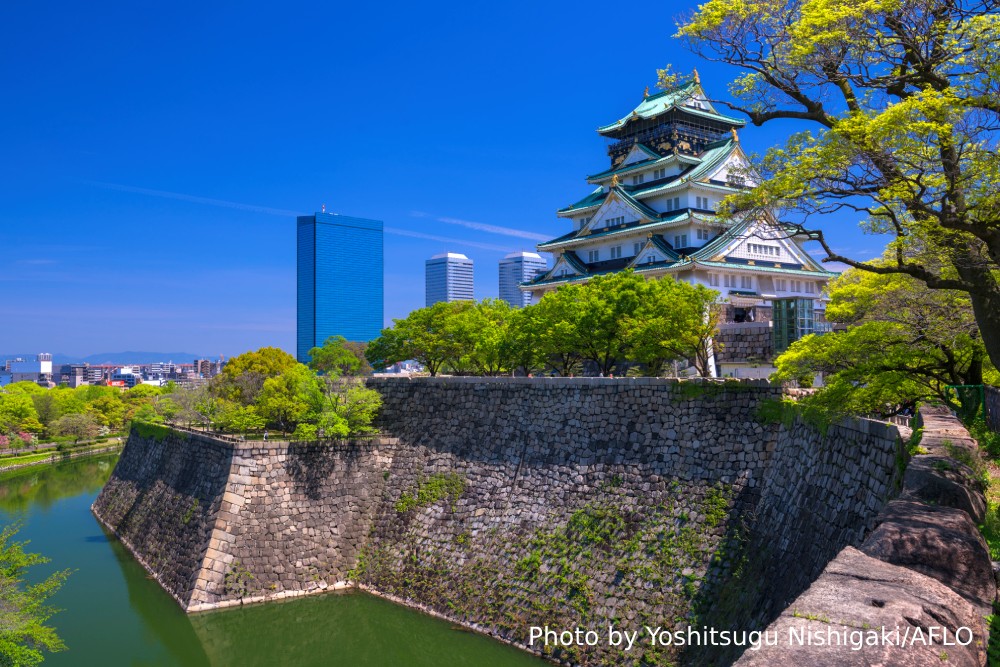
Osaka Castle, Osaka (Photo by Yoshitsugu Nishigaki/AFLO)
This is a symbol of the city in the heart of Osaka Castle Park, a massive green space that comes alive in the summer. Originally built in the late 1500s by Toyotomi Hideyoshi, the castle has seen its fair share of battles, fires, and reconstructions. While the current main keep is a concrete replica completed in 1931, it still holds historical weight and grandeur, especially with its towering stone walls, golden ornamentation, and surrounding moats.
The castle houses a modern museum for those who want to learn about Osaka’s rich feudal history and Toyotomi’s ambitious legacy. Head to the top floor for sweeping 360-degree views of Osaka’s skyline. It’s particularly stunning in the late afternoon when the city begins to glow under the summer sun.
The trees and ponds in the castle park makes it an ideal spot to relax and people-watch with an iced coffee or picnic lunch. Bring a blanket and sit beneath the trees, or rent a bike and cruise the outer moat trails
What to Do Nearby
Dotonbori District
Just a few subway stops away, Dotonbori is Osaka’s flashy, energetic entertainment and street food district. By day, it’s bustling with shoppers and foodies. At night, the area comes alive with neon lights, with signs like the famous Glico running man lighting up the canals. This is also the perfect spot to snap those “only in Osaka” night photos and explore the city’s legendary street food scene. Try local favorites like takoyaki (octopus balls), okonomiyaki (savory pancakes), and kushikatsu (deep-fried skewers).
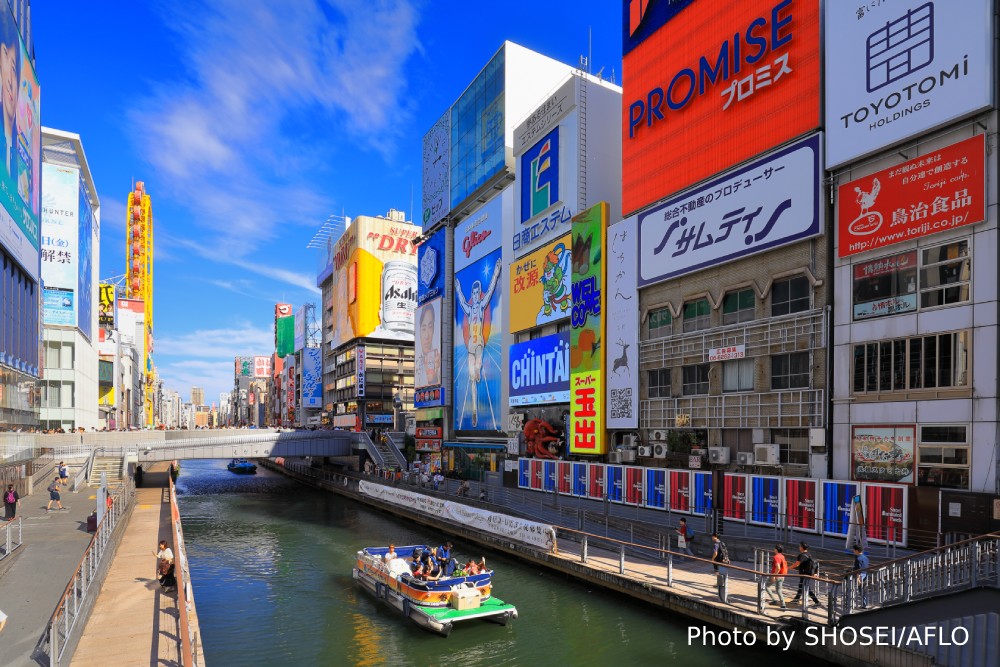
Giant billboard and sightseeing boat in Dotonbori, Osaka (Photo by SHOSEI/AFLO)
Tenjin Matsuri
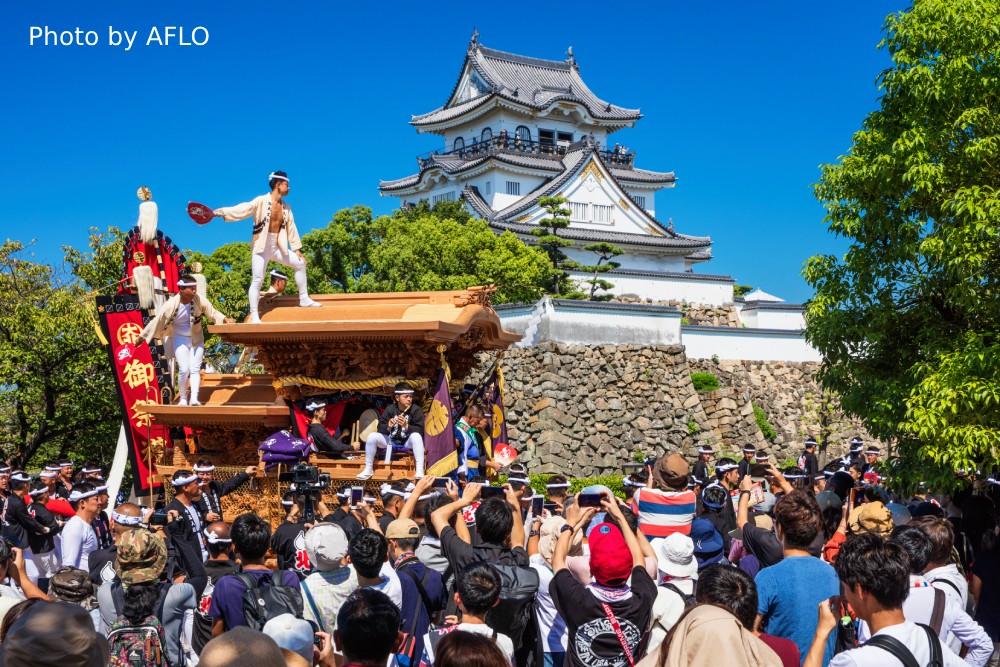
Kishiwada Danjiri Festival and Kishiwada Castle, Osaka (Photo by AFLO)
You’re in for a cultural treat if you attend the Tenjin Matsuri in late July. So much of the energy from it spills into the area around the castle. This isn’t just a local party, it’s one of Japan’s top three festivals, alongside Kyoto’s Gion Matsuri and Tokyo’s Kanda Matsuri. The Tenjin Matsuri includes a majestic land procession of portable shrines, musicians, and dancers, followed by a river procession featuring boats lit up with lanterns sailing down the Okawa River. The night ends with a huge fireworks show over the water.
Expo 2025 Osaka
If you’re visiting Osaka in summer 2025, you’re arriving at just the right time. Expo 2025 has officially launched and is one of the biggest international events of the decade. With global exhibits focusing on future technology, sustainability, health, and innovation, the Expo adds an entirely new layer of things to see and do in the city. Be sure to check out our Expo guide here, for more on how to make the most of your trip to Osaka.our trip to Osaka.
Nagoya Castle (Aichi)
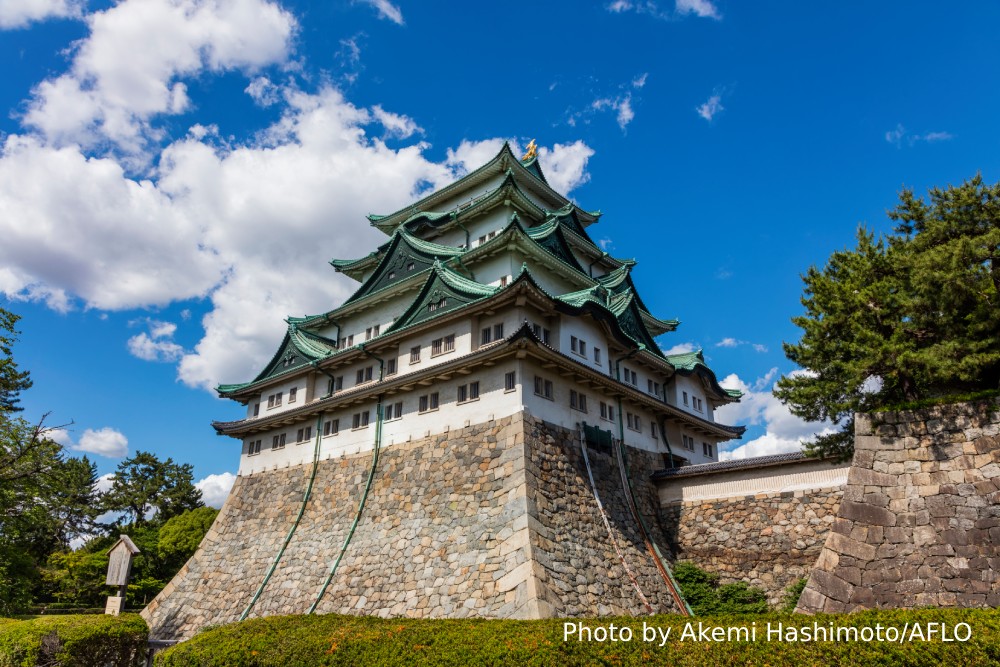
Nagoya Castle Keep and Stone Walls Aichi Pref. (Photo by Akemi Hashimoto/AFLO)
Nagoya Castle’s golden Shachihoko, a mythical tiger-headed carp perched on its rooftop, shines brightest under the summer sun, making the castle one of Nagoya’s most photogenic spots. It was originally built in the early 1600s by Tokugawa Ieyasu, the founder of the Tokugawa Shogunate. Inside, you’ll find beautifully restored palace rooms that showcase elaborate sliding doors (fusuma) and ceiling paintings that reflect the wealth and power of the Tokugawa clan. There are also informative exhibits about the castle’s history, architecture, and the people who lived here.
During summer, the castle gardens come alive with seasonal flowers. It’s great for a relaxed walk or a traditional matcha break at the nearby tea house. Don’t miss the samurai reenactment performances on weekends. Actors in full armor demonstrate sword techniques and interact with visitors for great photo ops.
What to Do Nearby
Osu Kannon Temple & Osu Shopping District
A short ride from the castle, Osu Kannon Temple is one of Nagoya’s most famous Buddhist temples. It’s home to a striking red gate and a statue of Kannon, the goddess of mercy. The temple is the spiritual centerpiece of the surrounding Osu Shopping District, a lively maze of over 1,200 shops, ranging from vintage stores and anime merch to crepe stands and secondhand electronics.
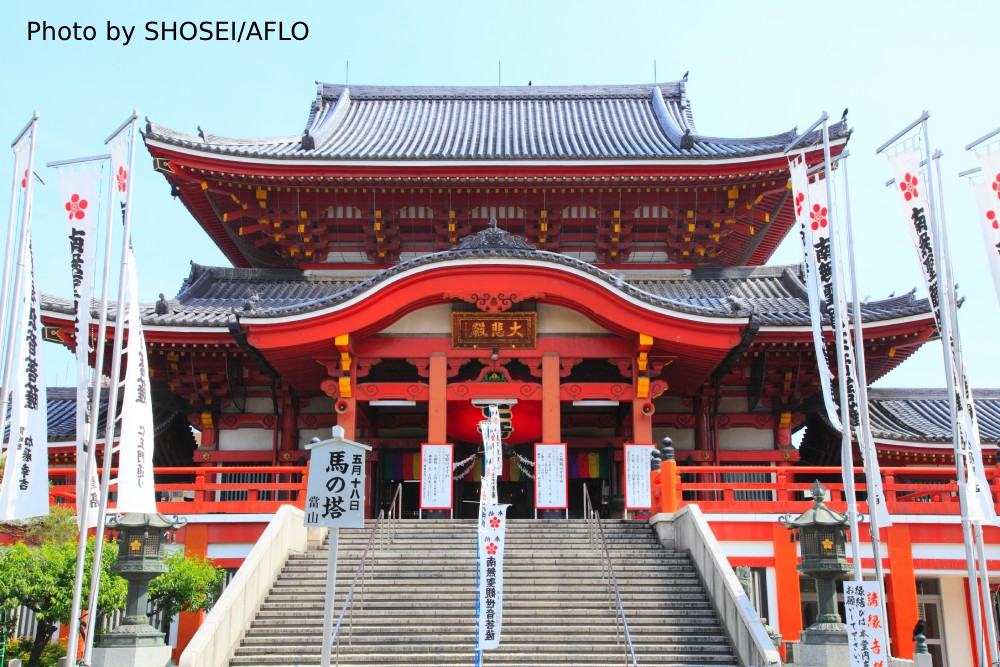
Main hall of Osu Kannon, Aichi Prefecture (Photo by SHOSEI/AFLO)
Toyota Commemorative Museum of Industry and Technology
Nagoya is the birthplace of Toyota, and this museum does more than just showcase cars. Housed in a former textile machinery factory, it walks you through Japan’s industrial evolution, from weaving looms to modern robotics. Interactive displays, working machines, and even robot demos make this a surprisingly hands-on and engaging spot, even if you’re not a car enthusiast.
Nagoya Castle Summer Festival (mid-August)
Held right on the castle grounds, this annual festival offers everything from bon dancing and taiko drumming to a variety of food stalls serving seasonal Japanese treats like kakigori (shaved ice), yakisoba, and grilled corn. At night, the castle is beautifully illuminated, adding a nice atmosphere to the festivities.
Also worth checking out:
Nagoya Port Festival (mid-July): Features fireworks over the water, live performances, and parades.
World Cosplay Summit (late July–early August): Centered around Osu, this globally recognized event brings cosplay fans from around the world to Nagoya.
Hirosaki Castle (Aomori)
.jpg)
Ukiyoe of the castle tower and apples in Hirosaki Park, Aomori Prefecture (Photo by Yasuo Kazama/AFLO)
Hirosaki Castle is a historic spot in Aomori Prefecture, known for its original wooden keep and the big park that surrounds it. It was built in 1611 by the Tsugaru clan. What makes it stand out today is that it’s one of the few castles in Japan with an original keep, though the current three-story structure was actually rebuilt in 1810 after a lightning strike burned down the original five-story tower.
While Hirosaki Castle is most famous for cherry blossoms in the spring, summer is actually a great time to go if you’re looking for a more laid-back experience. You’ll get great views of the castle, moats, and bridges without the huge springtime crowds. Aomori also stays cooler than a lot of other parts of Japan during summer, so it’s a nice break from the heavy heat.
Hirosaki Park
The park is a multi-seasonal beauty surrounding the castle. In spring, the cherry blossoms are a sight to behold, with over 2,500 trees creating a stunning landscape. During the Hirosaki Cherry Blossom Festival visitors come from far and wide to enjoy the beauty of the blossoms and the festival’s beautiful evening illuminations. In summer, the park transforms into a tranquil space, ideal for a casual stroll or a relaxing picnic under the shade of the trees.
What to Do Nearby
Mt. Iwaki
Often referred to as “Tsugaru Fuji” due to its resemblance to Mount Fuji, Mt. Iwaki offers breathtaking views of the surrounding area and is an excellent spot for hiking during the summer. The panoramic vistas from the summit are stunning, and the well-maintained trails will give you an opportunity to explore the natural beauty of the region. If you’re feeling adventurous, this hike will reward you with unforgettable scenery.

Iwaki Summit Aomori Pref. (Photo by Yoshiteru Takahashi/AFLO)
Hirosaki Nebuta Festival
Hirosaki Nebuta Festival is one of the most exciting events of the summer in the Aomori region. Held annually in early August, the festival features massive, hand-crafted Nebuta floats, each intricately painted to depict historical figures or mythical creatures. These floats parade through the streets of Hirosaki, accompanied by lively music and the cheers of festival-goers.
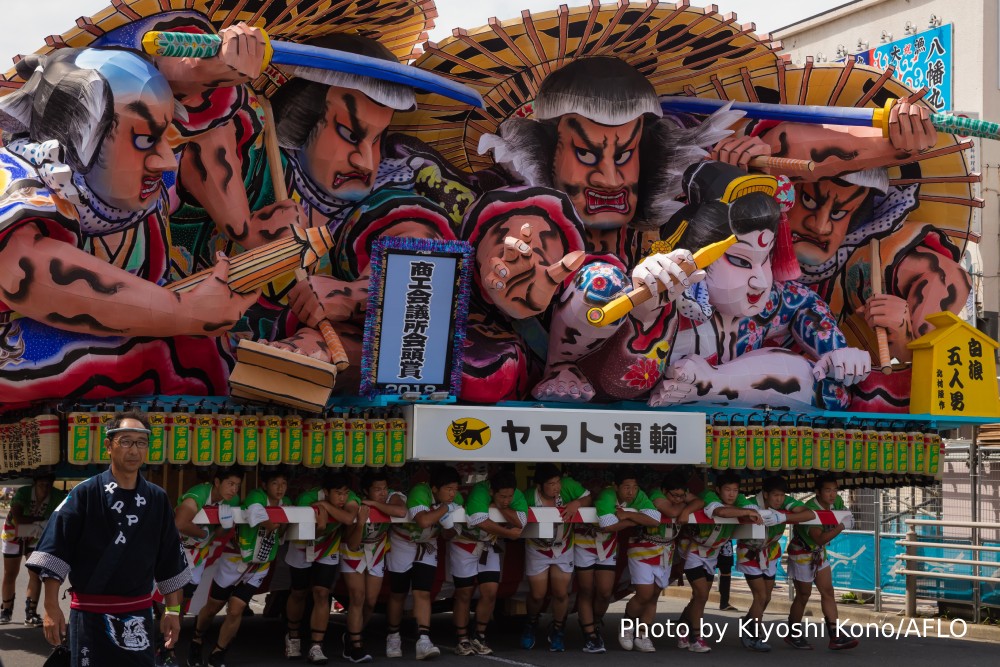
Aomori Nebuta Festival Aomori Pref. (Photo by Kiyoshi Kono/AFLO)
Matsue Castle (Shimane)
Matsue Castle is known as the “Black Castle” due to its dark wooden facade. Built in 1611, it’s a rare example of early Edo-period military architecture that has survived wars, fires, and modernization. Unlike some castles that were reconstructed with concrete, Matsue Castle’s main keep is original, complete with wooden floors, narrow staircases, and defensive features like sloped stone walls and arrow slits. That alone makes it a pretty special stop for history lovers or anyone interested in samurai-era Japan.
The castle is located in Matsue City, near Lake Shinji which makes the view from its six-story tower incredible. On a clear day, you can see the lake, the surrounding mountains, and the city below.

Horikawa Pleasure Boat, Shimane Prefecture (Photo by Hiroyuki Yamaguchi/AFLO)
What to Do Nearby
Horikawa Sightseeing Boat
Take the Horikawa boat cruise to see the castle from the water and pass under 17 unique bridges. Boats are shaded and provide comfort from the sun, however it might be worth carrying a fan. The humidity can build up, but a lakefront bench and sunset can make it all worthwhile. It’s such a peaceful experience that makes you want to slow down and take in the surroundings.
Lake Shinji
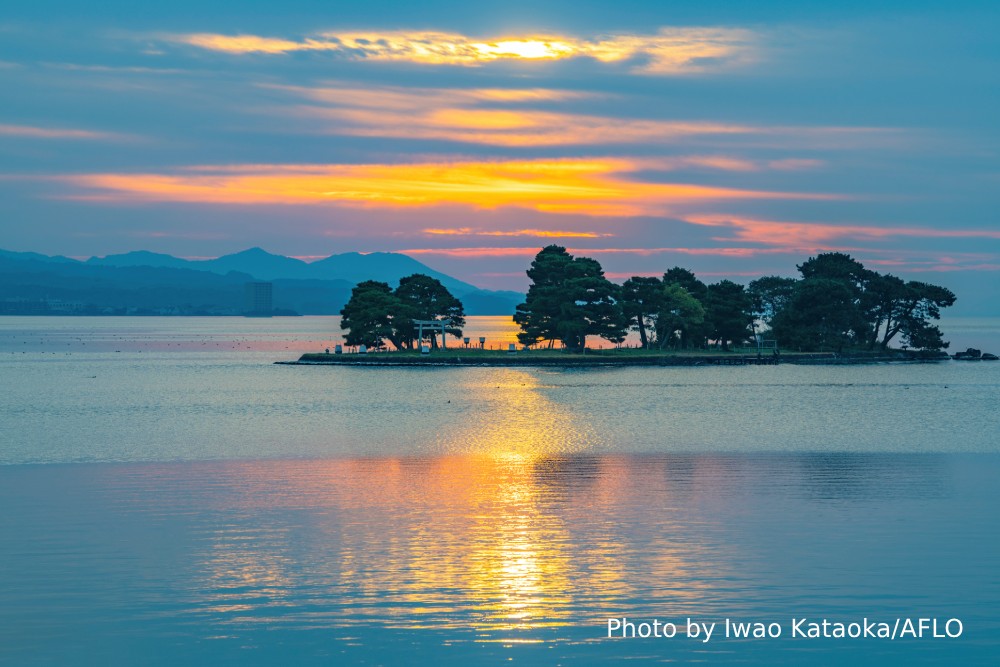
Shimane Prefecture, Lake Shinji Evening View (Photo by Iwao Kataoka/AFLO)
Just west of the city lies Lake Shinji, famous for its jaw-dropping sunsets, particularly during the summer. Locals and visitors gather at lakeside parks each evening to watch the sky turn fiery orange and soft lavender. In early August, the Shinji-ko Fireworks Festival lights up the lake with one of the largest fireworks displays in western Japan. Matsue’s summers are warm and humid, but the cool breezes from Lake Shinji make the heat more manageable. Grab a blanket, relax and enjoy the beautiful view of the lake.
Adachi Museum of Art
Just a short trip from Matsue lies the Adachi Museum of Art, renowned not only for its impressive collection of modern Japanese art, but especially for its meticulously curated gardens. Even those unfamiliar with Japanese garden design will be awed by its blend of nature, architecture, and seasonal aesthetics.
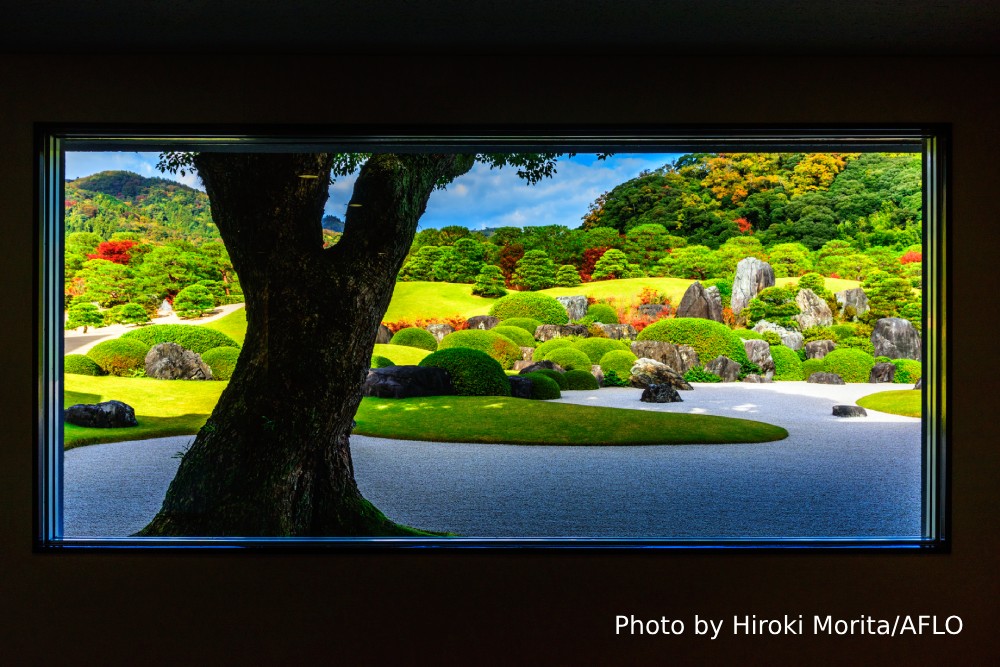
Adachi Museum of Art, Shimane, Japan Karesansui-Teien (dry landscape garden), framed picture (Photo by Hiroki Morita/AFLO)
Kumamoto Castle (Kumamoto)
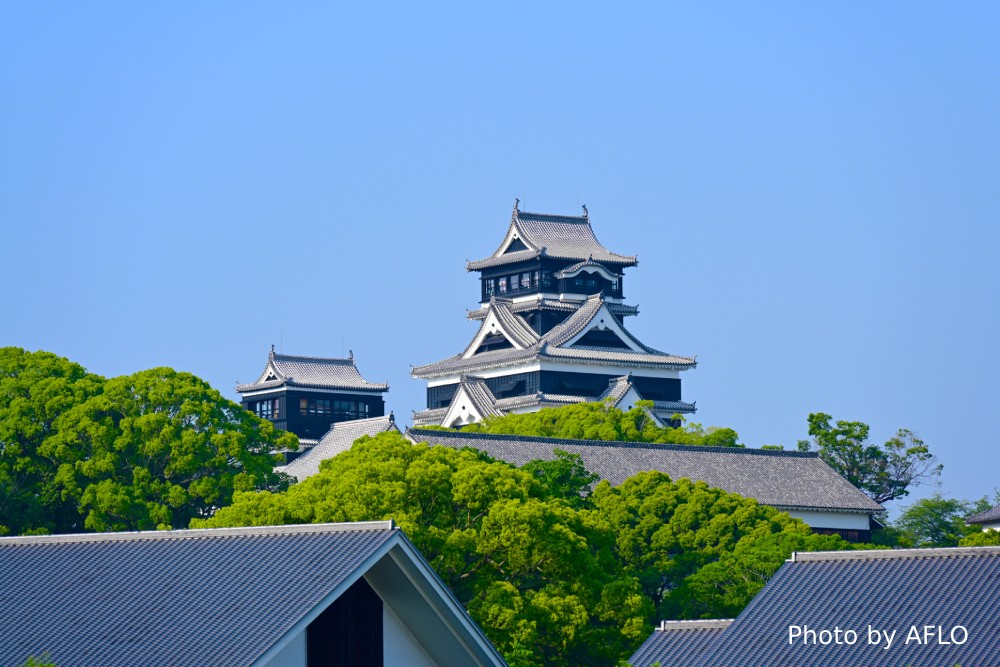
Beautiful, magnificent and grand Kumamoto Castle (Photo by AFLO)
Kumamoto Castle dates back to the early 1600s. It was expanded and fortified by the legendary warlord Katō Kiyomasa, who built it into a stronghold during Japan’s feudal era. With high stone walls that curve outward and wooden overhangs designed to fend off attackers, the architecture was all about defense. It famously withstood a long siege during the Satsuma Rebellion of 1877.
Even after sustaining damage in the 2016 earthquake, it remains a powerful symbol of resilience and pride. Much of the main keep has been restored and reopened, allowing visitors to once again step inside this fortress of samurai legacy. The full restoration of the castle will take decades, with some estimates stretching out to 2052. But what’s remarkable is how much of the site has already been restored. Visitors can actually see the reconstruction up close, making a trip here feel like you’re part of the castle’s next chapter.
What to do Nearby
Suizenji Jojuen Garden
A serene landscape garden built to replicate the 53 stations of the old Tokaido Road in miniature, Suizenji Jojuen is just a short tram ride from the castle. Its manicured lawns, koi-filled ponds, and Mt. Fuji-shaped hill are worth checking out, especially if you need a break from the city. Grab a matcha tea in the teahouse and stroll with your family or friends.
Mount Aso
Just outside the city lies Mount Aso, one of the world’s largest active volcanoes. Summer comes with clear skies and lush alpine landscapes, making it a perfect day trip for hikers, nature lovers, or anyone wanting to witness Japan’s volcanic geography up close.
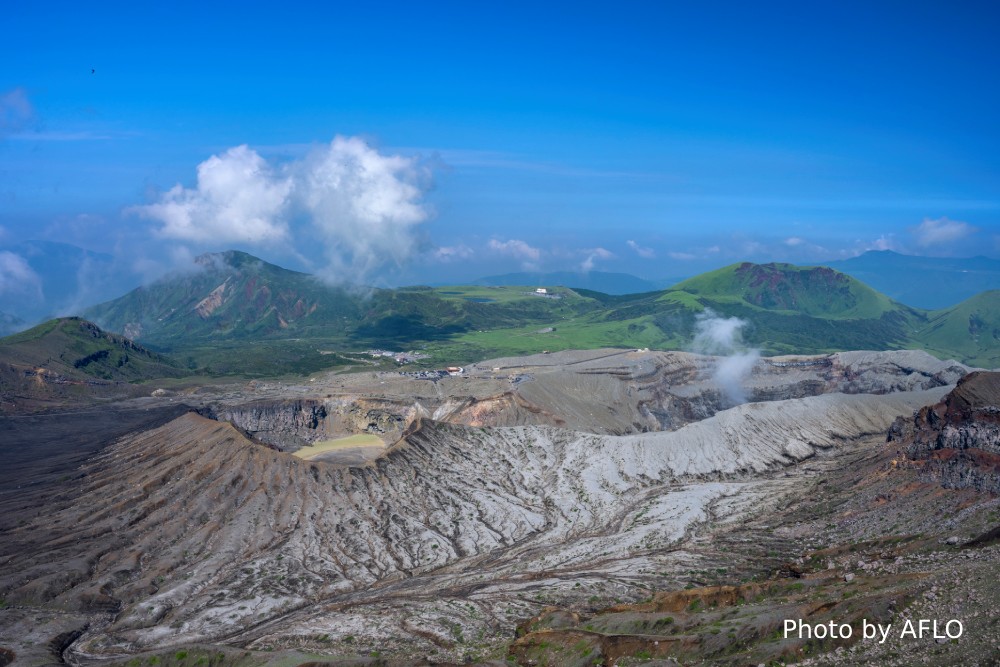
Aso Summer Mountain Climbing (Photo by AFLO)
Festivals
Castle Town Kumamoto Yukata Festival (July): Locals don summer yukata and flock to the streets for an old-meets-new celebration of traditional dance, food, and music.
Hinokuni Festival (August): Nicknamed the “Fire Country Festival,” this event celebrates Kumamoto’s vibrant spirit with large-scale parades and synchronized dance performances that take over downtown. It’s one of the city’s biggest cultural events and a fantastic way to experience Kyushu’s energy.
Shuri Castle (Okinawa)

Shureimon Gate of Shuri Castle, Okinawa (Photo by AFLO)
Shuri Castle is such a contrast to Japan’s mainland castles. It was once the royal palace of the independent Ryukyu Kingdom, With its bright vermilion gates, Chinese-influenced architecture, and distinct Ryukyuan style, it reflects Okinawa’s unique blend of cultures. Though parts of the castle were damaged by fire in 2019, reconstruction efforts are underway, and visitors can still explore restored areas and exhibits. Okinawa in summer is pure tropical bliss. After your visit, the island’s beaches and coral reefs are a must-see. Make time to relax at Emerald Beach in Ocean Expo Park or snorkel at Zamami Island for clear turquoise waters and thriving coral life.
What to Do Nearby
Okinawa World
Okinawa World is a theme park dedicated to Ryukyuan culture. It features the Gyokusendo Cave—one of Japan’s longest limestone caves—as well as workshops in glass-blowing, weaving, and Eisa dance performances.
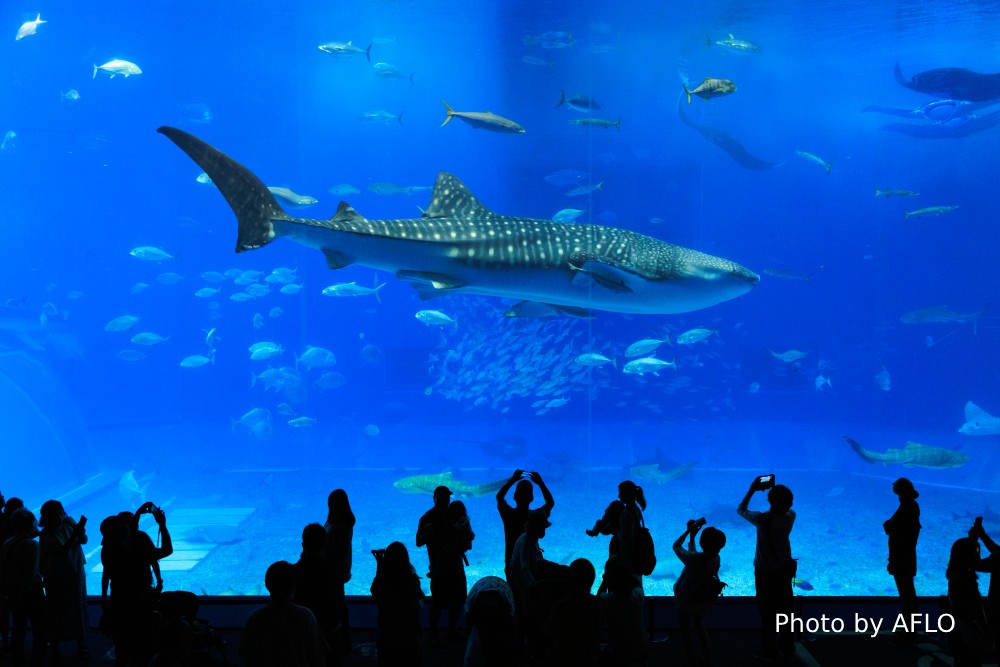
Okinawa Churaumi Aquarium, Okinawa (Photo by AFLO)
Kokusai-dori (International Street)
Kokusai-dori (International Street) located in the heart of Naha City is a must. This lively stretch runs for about 1.6 kilometers and is packed with shops, restaurants, cafes, entertainment, and colorful local energy that gives you a real taste of Okinawan culture. You’ll find everything from traditional crafts like Shisa statues and Ryukyu glassware, to quirky souvenirs and Okinawan snacks like beni-imo (purple sweet potato) tarts and sata Andagi (Okinawan donuts). It’s also a great place to try Okinawa’s famous taco rice.
Cape Manzamo
A must-visit for postcard-worthy views, this scenic cliff on the west coast is famous for its elephant trunk-shaped rock and panoramic sunsets over the East China Sea. This is an amazing spot for golden hour photography.
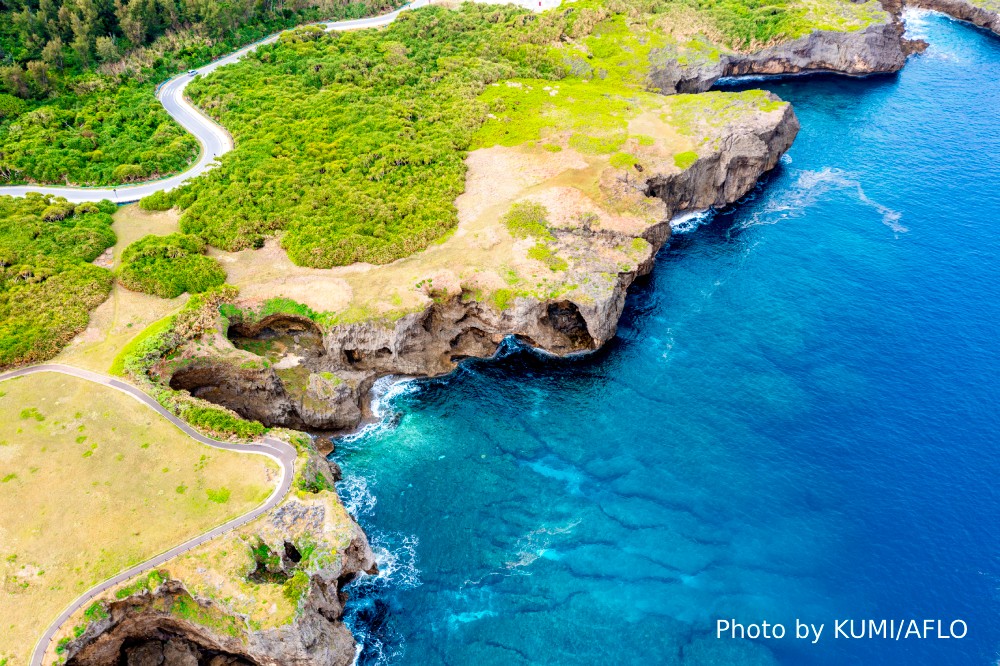
Manzakage (Onna Village, Okinawa Prefecture) (Photo by KUMI/AFLO)
Odawara Castle (Kanagawa)

Odawara Castle, Kanagawa Prefecture (Photo by Masataka Ishi/AFLO)
Just under an hour from Tokyo you will find Odawara Castle. It was first constructed in the mid-15th century and later came under the control of the Hojo Clan. The clan used the castle as a strategic stronghold to govern the area surrounding what is now Tokyo.
The current castle is a reconstruction that has the Ninja Museum on the eastern side and provides amazing views of Sagami Bay and the city around it. Summer brings vibrant greenery to Odawara Castle Park and a relaxed atmosphere. Be sure to grab lunch at the nearby Odawara Fish Market, where you can sample ultra-fresh sushi and seafood rice bowls.
What to Do Nearby
Odawara Flower Garden
The garden was opened in 1995 and is known for its seasonal flowers, peaceful atmosphere, and impressive greenhouse. It is a quiet, scenic spot perfect for a relaxing break from sightseeing. In June, the garden bursts into color with blooming irises and water lilies. As summer continues, bright sunflowers take center stage, adding a cheerful touch to the grounds. One of the highlights during this season is the “Dancing Fountain,” which offers playful, timed water displays that are especially popular with families and kids looking to cool off. Entry to the garden is free, with just a small fee for the greenhouse.
Hakone
Just a short train ride from Odawara Castle, Hakone is the perfect mix of natural beauty and relaxation. It is honestly the perfect weekend getaway. Start your adventure by soaking in one of the region’s many onsen (hot springs). Hakone’s hot springs are not only relaxing but also have incredible views of the mountains.
In Hakone you can also:
Ride the Hakone Ropeway over volcanic valleys
Cruise Lake Ashi with Mt. Fuji on the horizon
Visit the Hakone Open-Air Museum
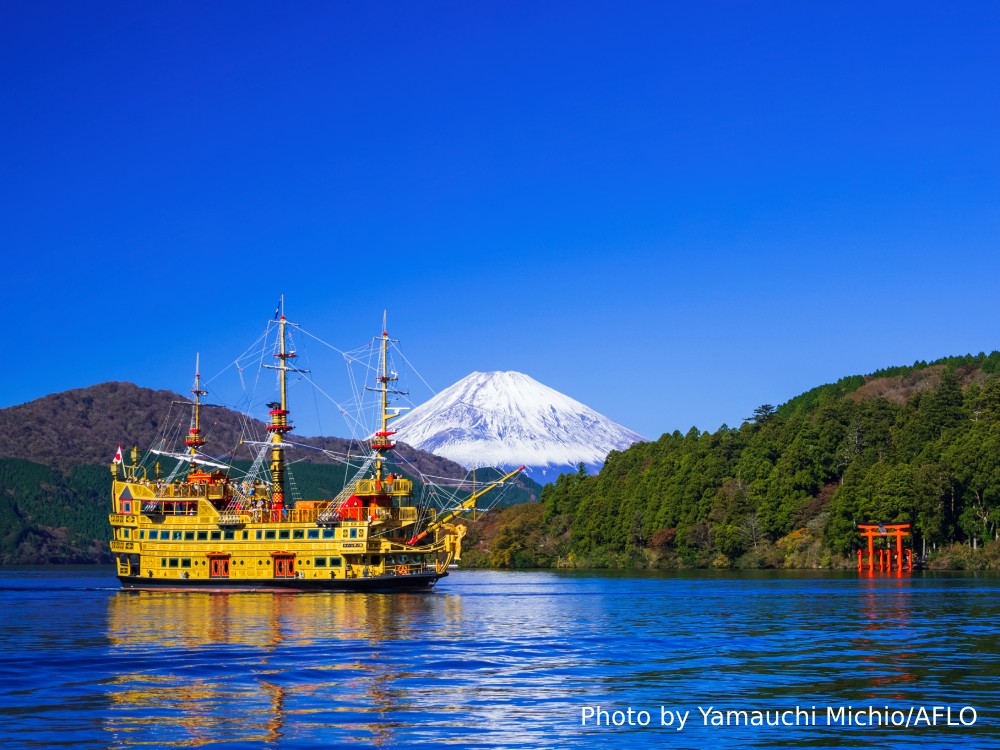
Lake Ashinoko, Mt. Fuji and a pirate ship in Hakone, Kanagawa Prefecture (Photo by Yamauchi Michio/AFLO)
Bicchu Matsuyama Castle (Okayama)
.jpg)
Okayama Prefecture Bicchu Matsuyama Castle in the morning and the mountain range in the sea of clouds (Photo by Keiji Komatsu/AFLO)
Perched at 430 meters above sea level, Bicchu Matsuyama Castle in Okayama Prefecture holds the title of Japan’s highest original mountain castle. Originally built in the 13th century, Bicchu Matsuyama Castle has witnessed centuries of political change and military conflict. The structure was expanded and fortified over time, particularly during the 17th century under the rule of the Mizunoya clan. Though portions of the castle were dismantled during the Meiji era, key features like the main keep and two turrets remain intact and have been carefully preserved.
Reaching the castle requires a moderate hike through forested trails, but the reward is breathtaking. You get to enjoy panoramic views like no other. Early risers may have a chance to catch the castle floating above the clouds—a dreamlike phenomenon known as unkai (sea of clouds) on certain mornings. Wear sturdy shoes and bring water for the hike. The climb is part of the adventure.
What to Do Nearby
Raikyu-ji Temple
At the base of the mountain lies Raikyu-ji Temple, a textbook example of a karesansui, or dry landscape garden. White gravel is carefully raked to suggest rippling water, while strategically placed rocks and clipped shrubs represent islands and mountains. Unlike many temple gardens that are viewed from walkways or paths, Raikyu-ji’s garden is best appreciated from the tatami room inside the main hall. It’s a place designed for quiet contemplation and stillness. It is perfect after a morning exploring the more physically demanding Bicchu Matsuyama Castle trail.
Bicchu Takahashi Matsuyama Odori
Every year from August 14 to 16, the city of Takahashi comes alive with its biggest summer celebration. It is the largest Bon dance in the prefecture taking place over three days in front of JR Bicchu-Takahashi Station. Regardless of the day of the week these dates fall on, the festival goes ahead as scheduled, attracting crowds from across the region.
One of the more eye-catching sights during the event is the display of intricate ice sculptures carved with chainsaws. You can see figures like unicorns, horses, and dragons melting in the heat of the summer sun.
When the clock strikes 7 p.m., the streets fill with residents and visitors ready to dance to traditional local rhythms. Two distinct styles of dance are featured: “Jiodori,” a graceful and refined dance that dates back to 1648, originally performed by townspeople as a prayer for abundant harvests and prosperous merchant homes; and “Shikumidori,” a more energetic style said to have been created by local warriors around 1744. Both styles are open for everyone to join so feel free to get involved. It’s a great way to experience the local culture up close.
Summer brings these castles and the city to life in unforgettable ways with taiko drum performances echoing through castle courtyards, dancing and more. The longer daylight hours, seasonal events, and vibrant local energy make summer a great time to explore historic sites across Japan. Start planning your trip, there’s so much to discover and fall in love with.
